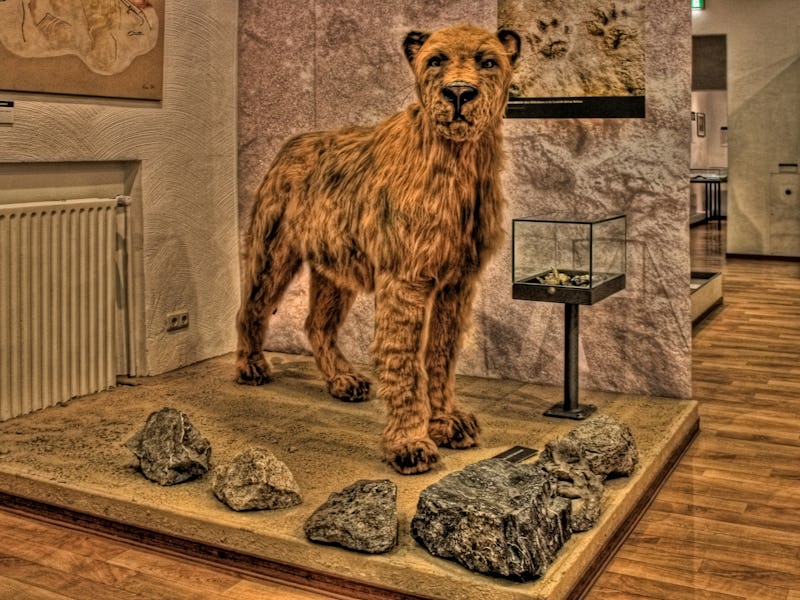South Korean Scientists Want to Genetically Resurrect an Extinct Cave Lion
Bring back ancient super-predators always works in the movies.

The last Panthera leo spelaea, a big cat known not-quite-popularly as the Cave Lion, walked the earth about 10,000 years ago. Now, a team of researchers in South Korea want to bring it back.
A pair of frozen, well-preserved cubs — estimated to be weeks old and the size of chihuahuas when they died — triggered a flurry of interest when they were uncovered in permafrost in a remote region of Russia called Yakutia. Preservation meant learning about tissues and muscles, stuff the fossil record isn’t so great about keeping on hand. But there were other possibilities — and more out there ideas.
South Korean geneticist Hwang Woo-suk plans to de-extinct the lion using tissue from the cubs, basically mimicking his proposal to bring back the mammoth. (The extraction process of the sample, to hear the Siberian Times tell it, did not go smoothly; the researchers wanted a whole leg, a request which the Russian paleontologists found too extensive.)
The process of de-extinction — that is, bringing animals back to the planet that no longer exist — involves some creative use of genetics. DNA degrades, and even the best mammoth genomes have gaps (as likely exist in the cubs’ DNA). To fill in the blanks, researchers like Woo-suk will have to take material from extant animals and splice them together to form hybrid clones. The groundwork is being laid now — Harvard researcher George Church, for instance, CRISPRed 14 genes of a mammoth into an elephant genome. But it will take some time before the techniques get close to a living creature.
The ultimate question is not if we have the appropriate can-do ‘tude. Instead, to quote Jurassic Park’s Ian Malcolm, it’s if “your scientists were so preoccupied with whether or not they could that they didn’t stop to think if they should.” Luckily, in the real world our scientists are asking the right questions — for instance, if the resources allocated toward de-extinction or raising hybrid mammoths from the dead could be better spent improving the ecosystem for living elephants.